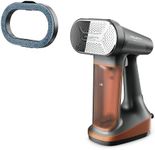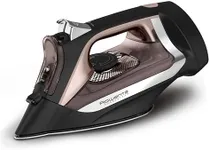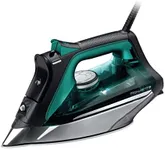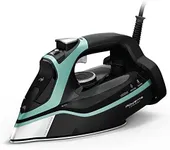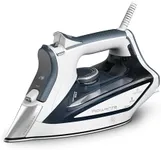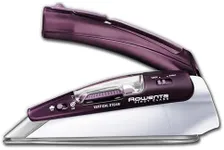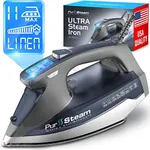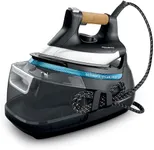Buying Guide for the Best Rowenta Irons
Choosing the right iron can make a big difference in how easy and effective your ironing experience is. When shopping for an iron, it's important to think about how often you'll use it, the types of fabrics you usually iron, and any special features that might make your chores easier. Understanding the key specifications will help you find an iron that fits your needs and makes ironing less of a hassle.WattageWattage refers to the power of the iron, which affects how quickly it heats up and how well it maintains its temperature. Higher wattage irons (usually above 2400W) heat up faster and can handle tough wrinkles more easily, making them great for frequent use or heavy fabrics. Medium wattage irons (around 2000-2400W) are suitable for most households and offer a good balance between performance and energy use. Lower wattage irons (below 2000W) may take longer to heat and are best for occasional use or lighter fabrics. Choose a wattage that matches how often and what types of clothes you iron.
Steam OutputSteam output measures how much steam the iron produces, which helps to relax fabric fibers and remove wrinkles. Higher steam output is better for thick or stubborn fabrics, while lower steam output is fine for delicate or lightly wrinkled clothes. Some irons offer adjustable steam settings, so you can tailor the amount of steam to your needs. If you often iron heavy fabrics like linen or cotton, look for a higher steam output; for delicate items, a lower or adjustable steam setting is ideal.
Soleplate MaterialThe soleplate is the flat surface that glides over your clothes. Common materials include stainless steel, ceramic, and non-stick coatings. Stainless steel soleplates are durable and glide smoothly, making them good for frequent use. Ceramic soleplates distribute heat evenly and are less likely to stick to fabrics, which is helpful for delicate items. Non-stick soleplates are easy to clean and prevent fabric from sticking, but may wear out faster. Consider what types of fabrics you iron most and how much maintenance you're willing to do when choosing a soleplate material.
Water Tank CapacityThe water tank holds the water used for steam. A larger tank means you can iron for longer without refilling, which is convenient for big loads of laundry. Smaller tanks make the iron lighter and easier to handle, but require more frequent refills. If you often iron many clothes at once, a larger tank is helpful; for quick touch-ups or occasional use, a smaller tank may be more comfortable.
Weight and ErgonomicsThe weight and design of the iron affect how comfortable it is to use, especially for long periods. Heavier irons can press out wrinkles more easily but may be tiring to hold. Lighter irons are easier to maneuver but may require more effort on tough wrinkles. Ergonomic handles and well-balanced designs make ironing less tiring. Think about your own comfort and how long you usually spend ironing when considering weight and ergonomics.
Anti-Drip and Anti-Scale FeaturesAnti-drip prevents water from leaking out of the soleplate at low temperatures, which helps avoid water stains on your clothes. Anti-scale features help prevent mineral buildup inside the iron, which can extend its life and maintain steam performance. If you use tap water or live in an area with hard water, these features are especially useful. Consider these options if you want to reduce maintenance and keep your iron working well over time.
Auto Shut-OffAuto shut-off is a safety feature that turns the iron off automatically if it's left unattended for a certain period. This helps prevent accidents and saves energy. If you have a busy household or sometimes forget to turn off appliances, this feature can give you peace of mind.
